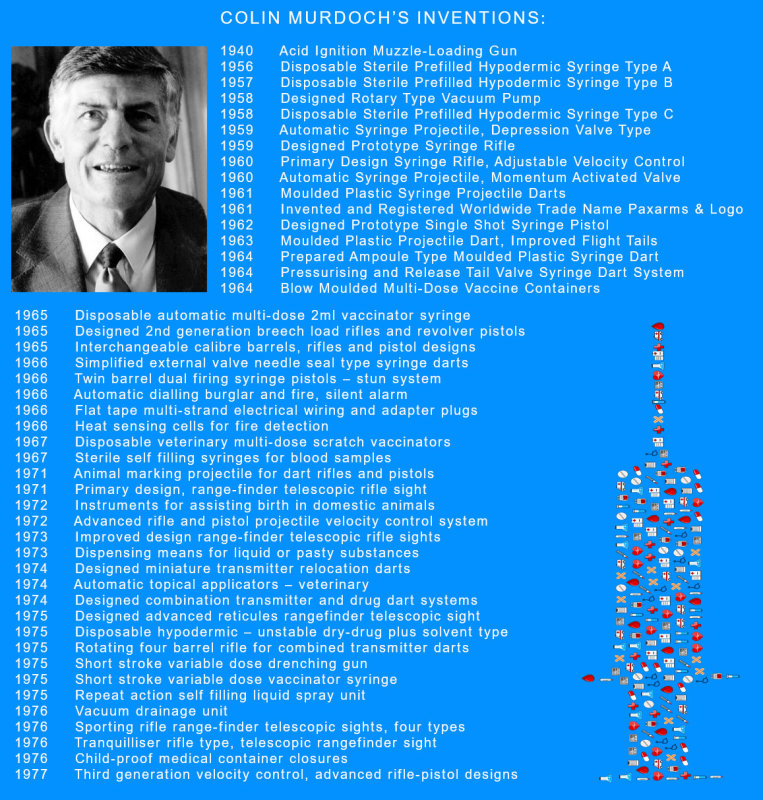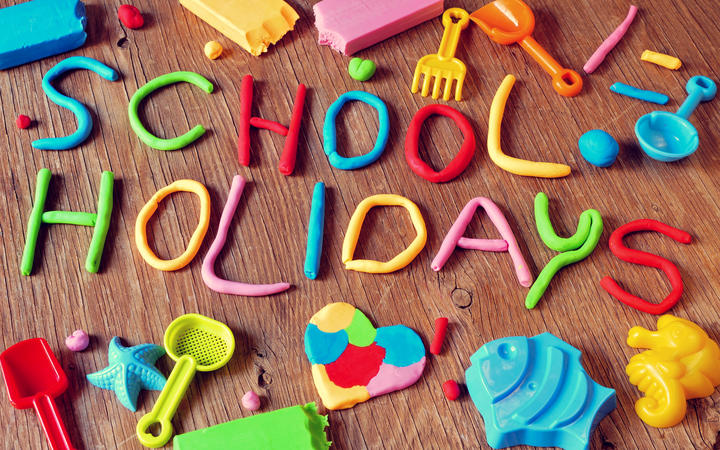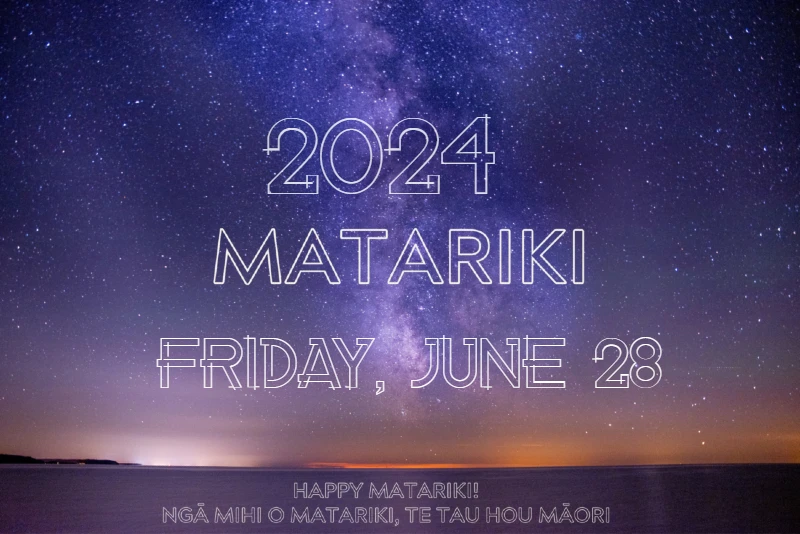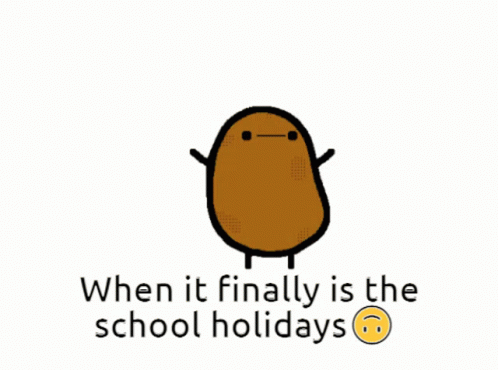9C1 Science
Section outline
-
-
Kaitiakitanga of Taonga in Aotearoa
-
-
Kia Ora Young Scientists,
Welcome to Year 9 Science. My name is Mrs. Lindsay and I will be taking you through your Science journey this year. We will be exploring various areas of Science, including Biology, Chemistry, Physics, and Earth Science. Whilst content knowledge is important in Science, its the Science Skills that permeates through all areas of Science, which will be assess in your Common Assessment Tasks (CATs) delivered under exam conditions this year.
Should you need to contact me, face to face is always easiest while in class. Alternatively you can send me an email at alindsay@mhjc.school.nz, but do note that my reply may be brief.
I look forward to co-creating our Science journey together with you all.
Mrs Lindsay

-
Nau mai, Hoki mai!
Welcome back to school. I trust that you have had a relaxing break.
Our context this term is Kaitiakitanga of Taonga in Aotearoa.
This term we will be how we are part of something much bigger... and that our survival may be in peril depending on the decisions that we make.
Success Criteria:
Connect the interdependence of our survival on other living things.
Describe the world around us using ecological terms and give examples (ecology, biotic, abiotic, individual, population, community, ecosystem)
Define habitat and give examples (lithosphere, cryosphere, biosphere, atmosphere, hydrosphere)
Describe how an animal has adaptations so that it is successful in its habitat (behavioural vs physical)Activities:
- Video- Our survival depends on bees
- Compare and contrast factors that will increase and decrease the bee population
- Ecological terms intro- via Finding Nemo, The Lion King, and Happy Feet
- Black mumba vs mongoose- who will win? Describe the behavioural and physical adaptations of each animal and watch them fight!
- Create a NZ endangered animal profile and present back to the class
Further Learning:
All resources are found on Google Classrooms, and EP
EXPLORE / TŪHURA learning intentions:
- We are EXPLORING the natural world around us
- We are EXPLORING the interactions between all living organisms in our biosphere
- We are EXPLORING the significant impact human actions (and inactions) have impacted on the equilibrium of our biosphere
-
Kia ora scientists!
We are continuing our journey to understand the life around us
Success Criteria:
Predict if an animal is a predator or prey by identifying its physical features
Describe predator prey cycles, and how these cycles occurActivities:
- Find similarities in physical adaptation between predators and prey
- Graph a predator and prey cycle using data
- Introduction to Goat Island
- Create a Goat Island resident profile
- Fishes of Goat Island Parts 1+2
- Contribute to our Goat Island Mural
Further Learning:
All resources on Google Classrooms, EP
EXPLORE / TŪHURA learning intentions:
- We are EXPLORING the natural world around us
- We are EXPLORING the interactions between all living organisms in our biosphere
- We are EXPLORING the significant impact human actions (and inactions) have impacted on the equilibrium of our biosphere
-
Kia ora Scientists!
Success Criteria:
I can describe some of the things I saw at Goat Island and the effects of the conservation efforts
Understand physical adaptation of animals from hot and cold climatesActivities:
- SNORKELLING AT GOAT ISLAND - identifying marine life
- GOAT ISLAND EDUCATION CENTRE - explaining conservation efforts to improve biodiversity
- Apply predator prey cycles - a very hungry kina (short story)
- Describe the effects of kina barrens on the environment, linking other ideas such as global warming
- Create a Goat Island resident profile
- Apply Bergman's rule and Allan's rule to animals of hot and cold climates, and explain why
Further Learning:
See Google Classroom for resources
FOCUS / ARONGA learning intentions:
- We are FOCUSING on developing our understanding of marine life by identifying different species at Goat Island
- We are FOCUSING on developing our ability to interpret our observations and communicating them using scientific conventions
- We are FOCUSING on identifying factors that improve biodiversity, as well as factors that decrease biodiversity
-
Kia ora Year 9s
Success Criteria:
Identify organisms in ecological terms - carnivore, herbivore, omnivore, producer, consumer, decomposer
Describe how these organisms interact in a food web, and how they are all essential to the strength of biodiversity
Categorise organisms in an energy pyramid
Explain the 10% energy transfer rule through each trophic levelActivities:
- Draw a food web
- Describe animals using ecological terms
- Ameoba sisters- Energy pyramids and biodiversity
- Create an energy pyramid of native NZ endangered/endemic species, labelling each trophic label and amount of energy transfer
Further Learning:
All resources are on Google classroom, EPEXPLORE / TŪHURA learning intentions:
- We are EXPLORING the natural world around us
- We are EXPLORING the interactions between all living organisms in our biosphere
- We are EXPLORING the significant impact human actions (and inactions) have impacted on the equilibrium of our biosphere
-
Kia ora Scientists!
Success Criteria:
I am able to communicate scientific ideas using scientific models
Activities:
- Complete Science Assessment 1
- Create a energy pyramid depicting strong biodiversity of Goat Island
- Give reasons as to why Goat Island is a Taonga and suggests ways we can show kaitiakitanga of NZ marine life aka economic zones
Further Learning:
See Google Classroom for resources
FOCUS / ARONGA learning intentions:
- We are FOCUSING on developing our understanding of marine life by identifying different species at Goat Island
- We are FOCUSING on developing our ability to interpret our observations and communicating them using scientific conventions
- We are FOCUSING on identifying factors that improve biodiversity, as well as factors that decrease biodiversity
PLAN & DO / WHAKAMAHI learning intentions:
- We are PLANNING and constructing a collaborated presentation using a scientific model so that we can demonstrate our understanding of marine ecology and its biodiversity.
-
Nau mai, Hoki mai!
Welcome back to Term 2. I trust that you have had a relaxing break.
Our context for Term 2 is: Whakamana | Empowerment. Stand up, Stand Out.
Whakatauki - Ē tū Rangatira - Stand strong and LeadOur focus this term is how might we use our scientific understanding, so that we can solve everyday problems, so that we can show Innovation - No. 8 Wire - Kiwi Ingenuity
Kiwis are know for their ingenuity; we are famous for solving problems and creating new solutions with the things that are immediately available to us. Part of this innovation includes the use of chemistry, by using chemical reactions that are common in everyday life.
This term we will be focusing on what the world is made of, the nature of matter and how it behaves. We will also be developing our laboratory skills in a safe and responsibly way, doing heaps of chemistry practicals, and learning how to communicate our finding using scientific conventions.

-
Kia ora Year 9s
Success Criteria:
I can name and draw common laboratory equipment, and use them in an appropriate manner
I can recall parts of a bunsen burner and light and extinguish one safely, following each necessary step
I can explain the difference between an orange and blue flame, and decide which is most appropriate for the task
I can heat liquids in a test tube, using a bunsen burner safely without overheating/cracking the glassActivities:
- Lab equipment - Scipad 9
- Draw lab equipment
- Draw and label parts of a bunsen burner
- Recall the steps to light a bunsen safely, using the acronym SETALight
- Scipad pg 12
- Practical - Compare heating watering with orange vs blue flame, and time
- Practical - heating liquids in a test tube
- Scipad 14 - 15
Further Learning:
See Google Classroom for all resources
-
Kia ora Year 9s
Success Criteria:
I can read scales accurately, including reading the meniscus of liquids
I can communicate scientific investigations accurately
I can write a concise aim for scientific investigationsActivities:
- Reading scales Scipad 17-19
- Practical - reading meniscus of liquids in measuring cylinders and thermometers
- video - scientific method
- Notes - how to write an aim, hypothesis, and identify 3 variables
- Writing aim worksheet
Further Learning:
See Google Classroom
-
Kia ora Takutai,
Success Criteria:
I can identify fair testing factors
I can write a hypothesis and justify why
I can identify the independent, dependant, and control variables in an investigation
I understand the scientific processActivities:
1. Writing hypothesis
2. Introducing variables
3. Fair testing worksheetFurther Learning:
All resources are on Google Classroom -
Kia ora scientists,
Success Criteria:
I can draw graphs accurately using scientific conventions
I can identify elements of fair testing and apply them
I can design and conduct a simple scientific investigation
I can communicate the findings of the investigation using scientific conventionsActivities:
- Drawing graphs - worksheet
- Fair testing worksheet
- Investigation - find the relationship between handspan and height/feetspan/cubit
- Create a lab report to communicate the findings of the investigation
- SCIPAD - revision - scientific method
Further Learning:
All resources on Google Classroom
-
Kia ora akonga,
This week we still start our learning around matter and lab skills.
Success Criteria:
I can identify different states of matter, their properties
I can explain their behaviour using particle theory of matter, energy levels, and Brownian motionActivities:
- States of matter worksheet
- venn diagrams
- Practical - matter circus
- Brownian motion class demonstration
- SCIPAD 59
- "Changes of states" worksheet
Further Learning:
All resources on Google Classroom
-
Kia ora scientists,
Welcome back to Term 3.
Success Criteria:
I can use chemistry terms to describe substances in a scientific manner
I can use a range of different methods to seperate different substances
I can use chemistry terms, such as solution, solvent and solute confidently
I can describe all the parts of a distillation kit, including the Liebig Condenser and explain the 5 steps of distillation
I can work safely and responsibly in a labActivities:
- LAB - chemistry terms carousel + worksheet
- LAB - filtration of milk and vinegar + worksheet
- LAB - Separating of rock salt through evaporation
- LAB - Separating mixtures carousel + worksheet
- LAB - Distillation of instant coffee - Teacher demonstration + writing
Further Learning:
All resources on Google Classrooms
-
Kia ora...
Success Criteria:
I can design, conduct a fair science investigation, and communicate the findings using several scientific conventions
I can demonstrate my lab skills, my knowledge of lab equipment, ways to improve accuracy and reliability of a scientific investigation, my ability to read scales, read and interpret graphs and diagrams.
I can communicate my understanding of separating mixtures in written formActivities:
- Assessment - EP Diagnostic
- Practical assessment - Making and investigating cottage cheese
- EOT revision - Separating mixtures - exam style questions
Further Learning:
All resources in Google Classroom
-
How human events may promote kotahitanga
How the activities of human events such as the Olympics impact the way we solve problems, consume energy, and make progress in the economy and sports.
Kia ora Year 9s,
The Paris Olympics are upon us. All the atheletes competing have to be in top form, and that involves carefully planned nutrition to ensure their bodies are getting the correct nutrition so that they can perform on a global stage. One of their main nutritional consideration is the amount of energy that they need to consume.
Everything in the universe can be whittled down to energy. Energy is all around us, but how have we learnt to embrace and utilise that energy?
We will begin to explore energy, and how we utilise that power everyday.
Our goal is to be able to describe different forms of energy, and how the transformation of energy creates and enhances our experiences of everyday life, both physically and environmentally!
-
Kia ora Year 9s,
Success Criteria:
I can recall and apply the Law of Energy Conservation
I can identify different forms of energy and their sources
I can observe and describe the series of energy transformations that occur around me
I can conduct an investigation that demonstrates how much energy is in different types of foods
I can compare and calculate energy efficiency
I can read and make sense of scientific literatureActivities:
- Types of energy - definitions and video
- Create a mindmap of different types of energy and give 3 examples each
- Describe energy transformations of everyday items using a flow chart
- Energy transformation cards - mix and match
- Energy transformation - Kahoot
- SCIPAD 83
- LAB - How much energy is in our food (results and calculations)
- LAB - Energy circus + worksheet
- Energy efficiency calculation and worksheet
- Scientific literacy - SCIPAD 85 - Energy changes inside an engine
Further Learning:
All resources are posted on Google Classroom
-
Kia ora Year 9s
Success Criteria:
I can describe how heat transfers through different mediums
I can describe the properties of different types of heat transfer
Activities:- Draw a Venn diagram comparing radiation, conduction and convection
- Video - Conduction, convection, and radiation
- Categorise everyday examples of conduction, convection, and radiation
- Label and explain all 3 methods of heat transfer when cooking eggs on a campfire
- Categorise properties of conduction, convection, and radiation
- LAB - expansion and contraction through heating and cooling - observe and explain
- LAB - conduction vs convection - observe and explain
- Particle theory of matter - SCIPAD 68-69
- LAB - heat conduction of metals + worksheets
1. rate of heat conduction in metal rods
2. Heating a metal ball
3. Rate of heat conduction of different metals
Further Learning:
All learning resources are posted on Google Classroom -
Kia ora Year 9s
Success Criteria:
I can describe parts of a waves and explain different types of waves
Activities:- Brainpop - Waves + activities
- Waves notes - worksheet
- The anatomy of a wave - notes and keywords
- LAB - Create a gummy bear wave machines
- Manipulate and describe the properties of a wave by observing a wave machine
- Create and explain longitudinal and transverse waves using ropes and slinky
- Draw waves of varying amplitude and frequency
Further Learning:
All learning resources are posted on Google Classroom
-
Kia ora Year 9s,
Success Criteria:
I can describe the properties of sound
I can explain how we hear sounds, using anatomical parts of the earActivities:
- Sound definitions and properties
- Drawing different types of sounds of various loudness and pitch
- Brainpop - Sound + video + activites
- Sound - notes worksheet
- DEMO - Silencing the bell jar
- Video - Cymatics
- DEMO - visualising the compression and rarefaction of sound waves using speakers and water
- Drawing a labeled anatomical diagram of an ear, and describe the function of each part.
- SCIPAD page 90 - hearing sound - scientific understanding and literacy
Further Learning:
All resources are posted on Google Classroom
-
Kia ora akonga
Success Criteria:
I can identify parts of a reflection on the plane mirror
I have investigated how light we can manipulate reflected light using different types of mirrors
I can describe the effects of concave and convex mirrors on an image, and identify the focal point and point of curvature
I can give real life examples of how different types of mirrors are helpful in our everyday lives
i can describe and explain the refraction of lightActivities:
- Video - Peppers Ghost
- Real life uses of mirrors
- LAB- Investigating angle of incidence vs angle of reflections using plane mirrors
- Light - Mirrors workbook
- Light - refraction workbook
- LAB - Light ray through a block of glass
- LAB - Light rays through a converging and diverging lens
Further Learning:
All resources on Google Classrooms
- Video - Peppers Ghost
-
Changemakers - "How might we shift our mindset to position ourselves to lead with manaakitanga"
This term we will be focussing on health, which some interpret as the absence of disease. For one to be able to help others, we ourselves need to be in a position of health so that we can show others manaakitanga. Colin Murdoch is one of these people, who list of inventions has revolutionised the medical field to have saved countless people in modern medical history.
Colin Murdoch: Aotearoa's Quiet Genius
One day in 1939, there was a special 10-year-old boy from Christchurch who was fascinated by animals, chemistry, and mechanics. Despite dyslexia giving him a bit of trouble in his schoolwork, this boy would go on to become one of Aotearoa’s most honoured inventors, saving countless lives, and whose innovations are with us every day.
https://www.motat.nz/collections-and-stories/stories/aotearoas-quiet-genius/
-
Kia ora akonga
Success Criteria:
I can describe how we see light in form of colours
I can use primary coloured lights to create different colours
I can describe parts of an eyeball and its function
I can conduct an eyeball dissection and identify the different layers of the eyeActivities:
- PHET LAB - Bending light worksheet
- LAB - Splitting sunlight using a prism
- LAB - combining colours by spinning a colour wheel
- LAB - combining coloured light
- Draw an scientific diagram of an eyeball and label
- Create a eyeball anatomy flipbook
- Cow eyeball dissection
Further Learning:
All resources are posted on Google Classroom
-
Kia ora akonga
Success Criteria:
I have prepared for my Science CAT this week
I can read and analyse an unfamiliar scientific article, and extrapolate information to answer exam style questionsActivities:
- SCIENCE CAT is on Monday 18th November, Session 1-2
- CAT prep - ECOSYSTEMS
- CAT prep - Writing practice for Beyond questions using keywords
- CAT prep - Section 1 - Lab skills, safety, and equipments
- CAT prep - Section 2 - Graph interpretation 1
- CAT prep - Section 2 - Graph interpretation 2
All resource are posted on Google Classroom
-
Kia ora akonga,
Week 6
Good luck with CAT week - remember to get lots of sleep, take lots of breaks when studying, drink lots of water, and fuel your brain with some healthy nutritious food! If you want your brain to perform well, make sure you take care of it!
Week 7
Success Criteria
I can identify and recall the anatomy of a heart
I can describe the pathway of blood through the heart
I have attempted and completed a heart dissection as part of a groupActivities
1. Parts to the heart - draw and label
2. Parts of the heart - model
3. Pathway of blood through the heart - video and worksheet
4. Sheep heart dissection -
Kia ora akonga,
Tuesday 3rd Dec - Santa Show!
Thursday 5th Dec - Celebration Assembly
Friday 6th Dec - WHANAU DAY OUT!
Thursday 12th Dec - Year 9 Prizegiving
-
You made it!!




